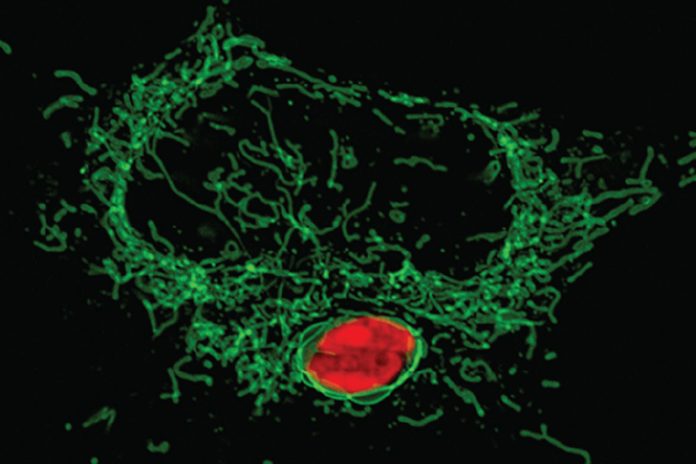
Most of us learned in school that mitochondria are the “powerhouses of the cell,” tiny structures that make the energy our bodies need.
But new research from UCLA shows that mitochondria have another surprising role: they can act like soldiers, protecting the cell from infection by starving invading microbes of vital nutrients.
The study, published in Science, focused on a parasite called Toxoplasma gondii.
This parasite is carried by cats and can be passed to humans through cat feces or undercooked meat. Many infections cause no symptoms, but toxoplasmosis can be dangerous during pregnancy or in people with weakened immune systems.
In mice, the parasite even changes behavior, making them less afraid of cats.
The UCLA team, led by microbiologist Lena Pernas, discovered that mitochondria defend cells by competing with pathogens for vitamin B9, also known as folate. Folate is essential for making DNA, and both the cell and the parasite need it to survive.
When the cell ramps up mitochondrial metabolism, it burns through folate, leaving less for the parasite. Without enough folate, T. gondii grows more slowly, reducing the severity of infection.
This finding changes how scientists think about mitochondria. “People think of mitochondria as energy factories that pathogens can exploit,” said Pernas. “But the truth is that mitochondria are like domesticated bacteria that compete with invaders for nutrients.”
That idea makes sense because mitochondria originally evolved from ancient bacteria. Millions of years ago, those bacteria entered larger cells and formed a symbiotic partnership.
The bacteria provided energy, while the cell offered protection. Over time, they became an inseparable part of the cell, but they still retain their own DNA, separate from the DNA in the cell’s nucleus.
The researchers noticed something curious: during infection, the amount of mitochondrial DNA in cells increased. This was linked to a stress-response protein called ATF4, which activates when the cell detects invaders. By boosting mitochondrial metabolism, ATF4 effectively helped the cell fight back. When scientists deleted ATF4, the parasites thrived—showing that the increase in mitochondrial activity was crucial for suppressing infection.
The key turned out to be folate. The more actively mitochondria used folate, the less was left for the parasite to build DNA. This process slowed the parasite’s ability to reproduce. Pernas calls it “nutrient competition”—a battle in which the cell’s own bacteria-like mitochondria starve the invading microbe.
The discovery could have wide implications. Other pathogens, such as Plasmodium, the parasite that causes malaria, also rely on folate. If researchers can learn to adjust mitochondrial metabolism through diet or medicine, it may be possible to strengthen the body’s natural defenses against a range of infections.
For now, the findings reveal a fascinating truth: mitochondria are more than powerhouses. They are also protectors, using the simple tactic of eating first to keep dangerous microbes at bay.



